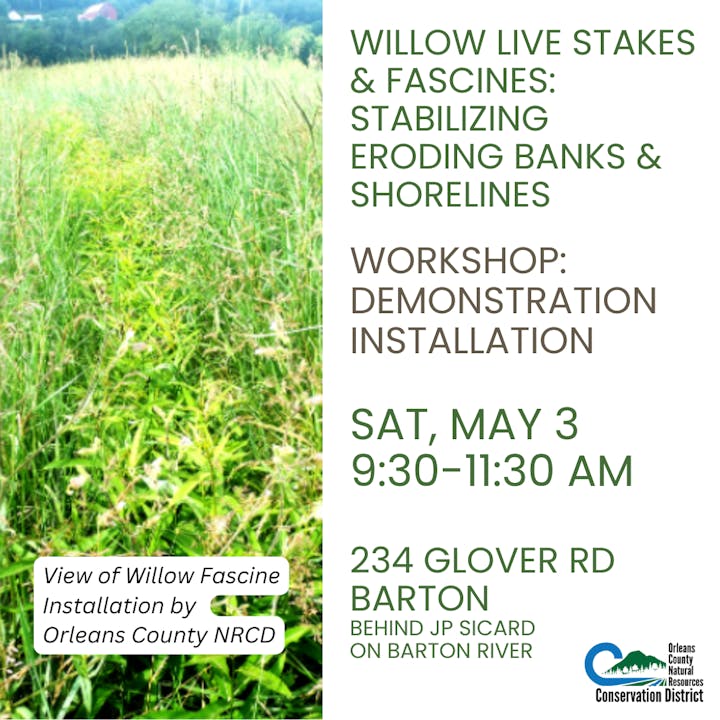Trees for Streams
What is Trees For Streams?
Trees for Streams is a program developed and promoted by the Vermont Association of Conservation Districts that assists landowners in planting trees in riparian areas to help protect water quality. The Orleans County NRCD can apply for grants for Trees for Streams projects. These projects are typically efforts initiated by a property owner or a community to restore a specific riparian area along a tributary.
Stream buffer planting projects help protect water quality!
Trees and shrubs planted along waterways provide more than just a pretty landscape. They help protect water quality by removing sediment and excess nutrients before they reach the surface water. Vegetated buffers can also help to mitigate flooding, prevent erosion, reduce stream temperatures, and provide important habitat for wildlife.
The District is targeting sites in Basin 17 for future projects, which roughly includes the following towns:
The District Commitment:
- OCNRCD staff will visit the site, discuss the project, and determine the site suitability with the landowner
- We secure funding so that there is no cost to the landowner
- We order plant material and coordinate a crew to install the plants
Once the site is selected for a Trees for Streams project, a comprehensive site evaluation will need to be completed. This helps to determine the ecological conditions of the site such as the natural communities, soil types, and presence of invasive species. Collecting this information is critical for a successful project.
Plantings usually occur in the spring when the weather is generally cool and wet. This gives the trees an entire growing season to become established before winter. Ordinarily 250-400 stems are planted per acre with 3-5 foot stock. The District will coordinate a crew to complete the planting.
In the years following a planting, landowners may remove grasses or invasive species that crowd the new plants. This may be done by hand, possibly with careful mowing, or sometimes spraying depending on the situation.
Mortality is expected with all planting projects. Difficult weather conditions, tough sites, predations, and competition are just some of the factors that may decrease the chance of success. In some instances a follow up planting may be required to ensure a certain level of success.
To learn more about the program, please reach out to Ted Sedell (contact info in the side bar).




